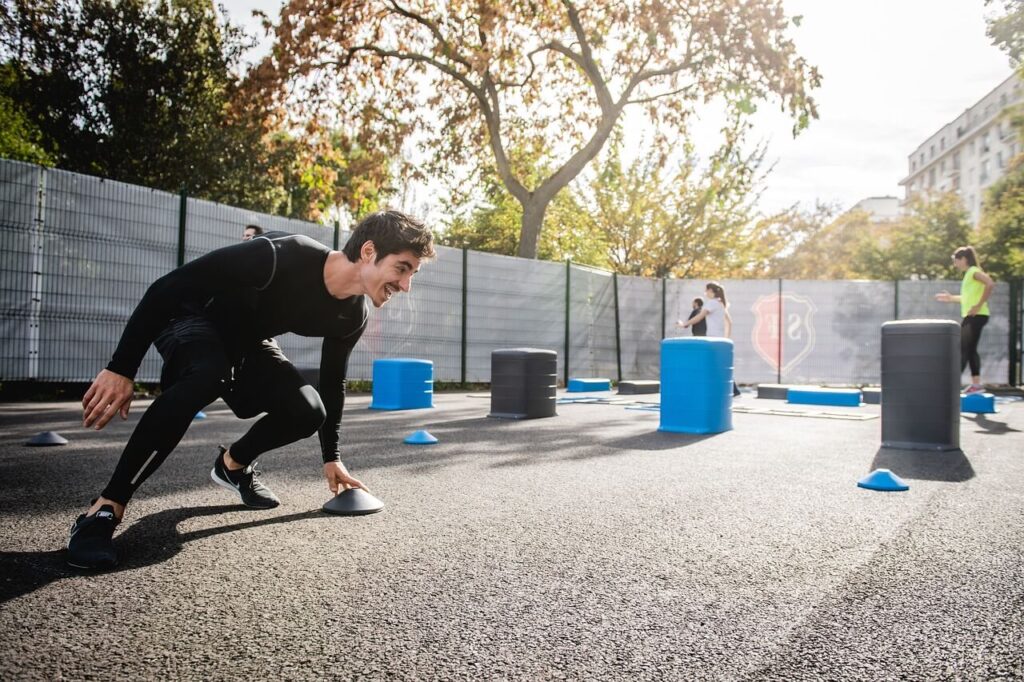Understanding Energy Systems For Effective Exercise
Understanding the intricacies of your body’s energy systems is crucial for achieving your fitness goals and tailoring an effective exercise plan. The three primary energy systems—phosphagen system (ATP-PC), anaerobic glycolytic system (lactic acid), and aerobic system—work collaboratively to replenish Adenosine Tri-Phosphate (ATP), the sole energy source for all bodily functions and activities. These systems, also called metabolic pathways, are activated depending on the intensity and duration of the activity. This article focuses on explaining how each of these energy systems functions, when they are utilized during exercise, and how understanding them can help you optimize your training for better performance, endurance, and overall fitness.
Phosphagen System (ATP-PC): The Immediate Burst
The phosphagen system, also known as the ATP-PC system, provides immediate energy for short, high-intensity bursts of effort. This system produces energy quickly, but only for about 10 to 15 seconds, and is ideal for activities requiring explosive power, such as 100-meter sprints, powerlifting, and fast-twitch muscle movements like squat jumps.
How It Works:
This system relies on stores of creatine phosphate in your muscles to regenerate ATP rapidly without the need for oxygen. It is the dominant energy source during maximal effort in short-duration exercises. Once creatine phosphate is depleted, the body transitions to other energy systems to continue fueling activity.
Best Suited For:
- High-intensity, short-duration activities
- Strength training and powerlifting
- Sprints and other explosive movements
Benefits:
- Increases strength and power output
- Supports fast-twitch muscle fibers for quick, forceful contractions
- Essential for developing explosive speed and performance in short bursts
Anaerobic Glycolytic System: The Intermediate Provider
The anaerobic glycolytic system, also referred to as the lactic acid system, takes over when exercise lasts beyond the phosphagen system’s 15-second limit and doesn’t yet require oxygen. This system breaks down glucose or glycogen (stored carbohydrates) to produce ATP, providing energy for activities lasting up to two minutes. It’s quicker than the aerobic system but less efficient, as it leads to lactic acid buildup.
How It Works:
Glycolysis can be aerobic (with oxygen) or anaerobic (without oxygen), but in high-intensity exercises, the anaerobic pathway is dominant. During anaerobic glycolysis, glucose is broken down into pyruvate, yielding 2 ATP molecules. Pyruvate is then converted into lactic acid, which causes muscle fatigue as it accumulates, explaining the “burn” during prolonged efforts.
Best Suited For:
- Moderate to high-intensity activities lasting 30 seconds to 2 minutes
- 400m and 800m sprints
- High-repetition strength training or circuit workouts
Benefits:
- Provides energy quickly for sustained high-intensity efforts
- Improves muscular endurance by training your body to handle lactic acid buildup
Helps bridge the gap between short bursts of activity and endurance-based exercise
Aerobic System: Sustained Energy for the Long Haul
The aerobic system is the body’s most efficient way of producing energy, as it relies on oxygen to break down carbohydrates, fats, and even proteins to produce ATP. This system can sustain energy production for long-duration, low to moderate-intensity activities, such as marathon running, cycling, or long-distance swimming.
How It Works:
When oxygen is readily available, aerobic respiration can continue for hours. This system breaks down carbohydrates, fats, and even proteins to produce energy, making it ideal for endurance activities. It plays a significant role in exercises like long-distance running, cycling, swimming, and any activity that requires a steady pace over an extended period.
Best Suited For:
- Low to moderate-intensity, long-duration exercises
- Marathon running, long-distance cycling, swimming, and hiking
- Continuous aerobic activities like steady-state cardio
Benefits:
- Extremely efficient at generating ATP over long periods
- Maximizes fat oxidation, making it ideal for fat-burning workouts
- Improves cardiovascular health, lung capacity, and overall endurance
Choosing the Right Energy System for Your Goals
Each energy system serves a unique function, and understanding how they work can help guide your exercise choices. For example, if you aim to maximize calorie burn, incorporating short bursts of high-intensity exercises that tap into the phosphagen and glycolytic systems can increase energy expenditure. High-intensity interval training (HIIT) uses these systems effectively to achieve a higher calorie burn due to the inefficiency of anaerobic energy production.
Alternatively, if you’re training for endurance or want to improve cardiovascular health, focusing on aerobic activities like running or cycling will build your body’s capacity to sustain effort over longer periods. Combining exercises from all energy systems leads to a balanced and effective fitness routine.
Optimizing Your Exercise Plan
To maximize the benefits of each energy system, include activities that target all three systems in your workout routine. Here’s how:
- Phosphagen system: Incorporate explosive, high-intensity movements such as heavy lifts, sprint intervals, or plyometrics.
- Anaerobic glycolytic system: Focus on moderate to high-intensity activities like circuit training, 400m to 800m sprints, or CrossFit-style workouts.
- Aerobic system: Engage in long-duration, steady-state cardio such as jogging, cycling, or swimming for 30 minutes or more.
This balanced approach ensures you develop strength, power, endurance, and cardiovascular health, making your workout comprehensive and well-rounded.
Interval Training: A Blend of Systems
Interval training is an effective way to engage both the aerobic and anaerobic energy systems. By alternating between short bursts of high-intensity effort and periods of lower-intensity recovery, you activate both the anaerobic (phosphagen and glycolysis) and aerobic energy systems. Interval training is highly effective for improving both endurance and overall fitness while burning calories efficiently.
Combine Anaerobic and Anaerobic Exercises in Your Workouts
Aerobic and anaerobic exercises are two distinct yet complementary components of a well-rounded fitness routine. Aerobic exercises, such as running, swimming, and cycling, focus on increasing cardiovascular endurance by engaging large muscle groups and promoting efficient oxygen consumption. These activities enhance lung capacity and heart function, contributing to overall cardiovascular health. On the other hand, anaerobic exercises, like weightlifting and high-intensity interval training (HIIT), prioritize short bursts of intense effort, often challenging specific muscle groups. Anaerobic workouts promote strength, power, and muscle development. Integrating both aerobic and anaerobic exercises into a fitness regimen ensures a comprehensive approach to health, balancing cardiovascular benefits with muscular strength and endurance. Tailoring the mix of these exercises to individual fitness goals can lead to a well-rounded and effective fitness routine
Considerations for Individual Differences
Every individual’s body responds differently to exercise based on various factors such as age, fitness level, and health conditions. Some people may excel in short bursts of energy, while others thrive in long-duration endurance exercises. Recognizing these individual differences is important when designing a fitness plan. Tailoring your routine to your unique needs ensures you’re maximizing your potential while minimizing the risk of injury.
Conclusion
In conclusion, a deep understanding of the body’s energy systems allows for smarter workout choices and more efficient training. The aerobic and anaerobic energy systems work together depending on the intensity and duration of your workout, with the anaerobic systems dominating during short bursts of high-intensity effort, and the aerobic system sustaining energy for longer, moderate-intensity efforts. Whether your goal is strength, endurance, or weight loss, incorporating exercises that engage different energy systems leads to a balanced and effective approach. By targeting these systems strategically, you can reach your fitness goals faster and with better long-term results. Whether you prefer explosive, high-intensity efforts or steady, sustained endurance activities, an informed exercise plan will set you on the path to success.
Love who you see in the mirror.
Personal Training, Massage Therapy, and Nutrition Coaching designed to help you reclaim your energy, passion and motivation in body, mind, and spirit. Contact us today and book your free session!
Make the Pledge Today
Make the Pledge Today
At Pledge To Fitness®, we believe fitness should be accessible, convenient, and built around your lifestyle. That’s why we offer personalized plans designed to meet you where you are—literally.
Choose the training option that fits your needs:
-
At home personal training for flexibility and privacy
-
Studio personal training for a focused, hands-on experience
-
Personal training in Houston to explore our full range of programs
No matter where you begin, our expert team is here to guide you with personalized support, coaching, and care. Ready to get started? Contact us today and build a plan that works for you.



